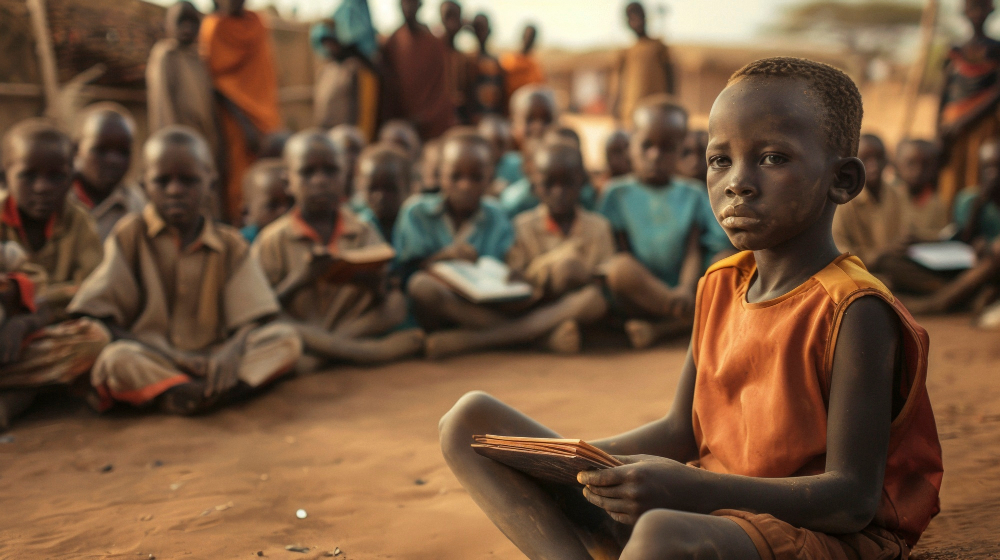
Education is a fundamental right, yet millions of children worldwide remain out of school due to economic hardship, cultural barriers, conflict, and inadequate infrastructure. The challenge is particularly severe in developing nations, where poverty and systemic issues limit access to quality education. Addressing this crisis requires innovative and scalable solutions that break down barriers and create opportunities for every child to learn.
1. Flexible and Alternative Learning Programs
Many children remain out of school because traditional education systems do not accommodate their unique circumstances. Flexible learning models can help bridge this gap:
- Accelerated Learning Programs (ALPs): Designed for children who have missed years of schooling, ALPs compress the curriculum into shorter periods, enabling students to catch up and reintegrate into formal education.
- Community Learning Centers: Localized learning hubs in remote or underserved areas can provide education for children who cannot travel long distances to schools.
- Mobile Schools: In regions where children migrate with their families due to work (e.g., nomadic communities or farming families), mobile schools can bring education to them.
2. Leveraging Technology for Digital Learning
The rise of digital tools has transformed how education is delivered, particularly for children in hard-to-reach areas. Some key innovations include:
- E-Learning Platforms: Apps and websites offering curriculum-based learning content allow children to study at their own pace, even in areas with limited schools.
- Radio and TV Learning Programs: In areas with low internet access, educational radio and television broadcasts can provide lessons to children at home.
- Offline Digital Learning Solutions: Tablets preloaded with educational content can be distributed to children in remote areas, enabling them to learn without needing an internet connection.
3. Public-Private Partnerships in Education
Collaborations between governments, businesses, and non-profits can create sustainable solutions to reduce the out-of-school population:
- Corporate Social Responsibility (CSR) Initiatives: Companies can invest in school infrastructure, scholarships, and digital learning tools.
- Adoption of Schools: Private organizations can “adopt” underfunded schools, providing resources, teacher training, and curriculum development support.
- Tech-Driven Solutions: Companies specializing in technology can support education through AI-driven tutoring platforms, virtual classrooms, and interactive learning tools.
4. Reducing Financial Barriers to Education
For many families, the cost of schooling—including tuition, uniforms, books, and transportation—is a significant obstacle. Solutions include:
- Scholarships and Conditional Cash Transfers: Governments and NGOs can provide financial incentives to families who enroll and keep their children in school.
- Free School Meals Programs: Providing meals in schools encourages attendance while also addressing child malnutrition.
- Community-Based Fundraising: Local organizations can create education funds to support children at risk of dropping out due to financial constraints.
5. Empowering and Training Teachers
The quality of education depends on well-trained and motivated teachers. Addressing teacher shortages and improving capacity can make education more accessible and engaging:
- Teacher Training Programs: Continuous professional development ensures educators are equipped with modern teaching methods.
- Incentives for Teachers in Rural Areas: Providing housing, bonuses, or career growth opportunities can encourage teachers to work in underserved regions.
- Use of AI and Virtual Teaching: In cases where there are insufficient teachers, AI-driven platforms and virtual classes can supplement learning.
6. Promoting Gender-Inclusive Education
In many cultures, girls face higher barriers to education due to early marriage, household responsibilities, or societal norms. Targeted interventions can address these challenges:
- Girls’ Scholarship Programs: Special incentives for girls’ education can encourage families to prioritize their schooling.
- Safe School Environments: Schools should provide separate sanitation facilities for girls, menstrual hygiene support, and secure learning spaces to reduce dropout rates.
- Community Awareness Campaigns: Educating families on the long-term benefits of girls’ education can shift cultural perceptions.
7. Strengthening Community Involvement in Education
Education solutions are most effective when local communities are actively involved. Some ways to engage communities include:
- Parental Engagement Programs: Educating parents on the importance of schooling ensures they prioritize their children’s education.
- Local Education Committees: Community-led groups can oversee school management, hold authorities accountable, and mobilize resources.
- Mentorship and Role Models: Connecting children with successful individuals from their communities can inspire them to stay in school and pursue their dreams.
8. Addressing Education in Conflict Zones
Conflict and displacement disrupt the education of millions of children. Innovative strategies to ensure learning continues include:
- Emergency Education Programs: Temporary schools in refugee camps and conflict zones provide continued education for displaced children.
- Digital and Mobile Classrooms: Virtual classrooms and mobile education units can reach children in war-affected areas.
- Trauma-Informed Teaching: Teachers should be trained to support children dealing with trauma and psychological stress.
9. Policy Reforms and Government Commitment
Sustainable change requires strong policies and government dedication to prioritizing education:
- Compulsory and Free Basic Education Laws: Enforcing policies that mandate free education up to a certain level can ensure more children attend school.
- Increased Education Budgets: Governments should allocate more funds to building schools, hiring teachers, and providing learning materials.
- Monitoring and Accountability: Regular assessments and data collection can help track progress and identify areas needing improvement.
Conclusion
Reducing the population of out-of-school children requires a multi-faceted approach that combines innovation, technology, financial support, community involvement, and strong government policies. By leveraging alternative learning models, digital education tools, corporate partnerships, and gender-inclusive strategies, it is possible to create an inclusive education system where every child has access to quality learning. Ensuring that no child is left behind is not just an educational goal—it is a necessity for social and economic development.



